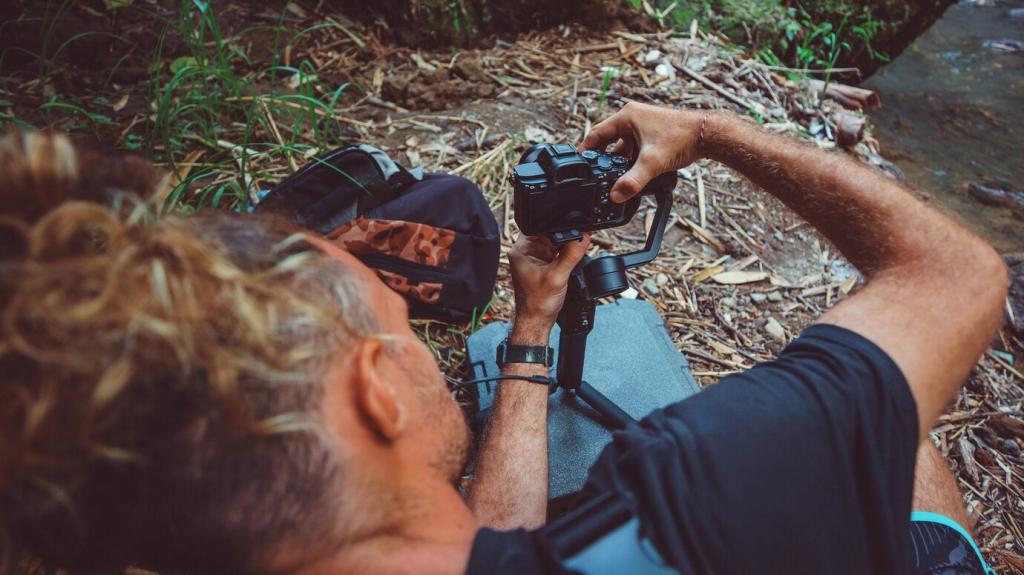Layering Tips for Seasonal Hikes
Selected theme: Layering Tips for Seasonal Hikes. Welcome to a friendly, trail-tested guide that makes dressing for changing weather simple, comfortable, and adventurous. Learn how to stack smart layers, adapt on the move, and enjoy every season. Share your questions, subscribe for fresh trail insights, and help others stay cozy and confident outdoors.

Core Principles You Can Trust
Start with moisture management, add adaptable warmth, and finish with protection from wind or precipitation. These three layers—base, mid, and shell—work together so you can regulate heat, stay dry, and keep hiking comfortably through shifting seasonal conditions.
Micro-Adjustments Beat Big Sweats
Instead of pushing through discomfort, add or remove thin layers before you get chilled or drenched in sweat. Small changes—unzipping vents, rolling sleeves, swapping hats—help you stay balanced. Tell us the micro-adjustment that saved your last blustery ridge walk.
Pace, Weather, and Terrain Triad
Hiking fast uphill in cool air demands lighter layers than slow descents in biting wind. Watch the forecast, notice cloud build-up, and feel the trail’s exposure. Comment with your triad strategy so others can learn from your mountain or forest routines.
Base Layers: Managing Moisture Across the Calendar
Merino manages odor and insulates when damp, making shoulder-season starts pleasant, while synthetics dry faster and often cost less. Many hikers mix both across the year. Share your go-to blend for frosty mornings or humid climbs to help others decide more confidently.
A close, non-restrictive fit transports moisture efficiently without chafing. Avoid heavy compression in hot months and consider long sleeves for sun or bug protection. What cut felt perfect under a pack strap during your longest ascent? Your insight can guide newer hikers well.
Lightweight weaves excel in summer speed hikes, while midweights shine during crisp fall or early spring. For winter, consider grid-knit patterns that trap warmth yet breathe. Post your favorite model and why it keeps your torso happy on variable, windy ridgelines.

Midlayers: Warmth You Can Modulate
Classic fleece shines during steady movement because it breathes well, especially under a vented shell. Quarter-zip designs allow quick dumping of heat. What fleece weight helps you balance an icy dawn start with a sunny, exposed summit without constant layer chaos?
Shells: Your Weather Shield
Waterproof-breathable membranes shine when forecast confidence drops. Look for pit zips and hem cords to vent efficiently. Yes, they can feel crinkly—but they keep layers functional. Tell us which membrane kept you cheerful during slanting sleet and sideways gusts across a high pass.
Seasonal Playbooks: Spring, Summer, Fall, Winter

Spring: Unpredictable Showers and Mud
Spring demands fast-drying base layers, a breathable fleece, and a reliable rain shell. Gaiters add sanity on slushy trails. Keep gloves accessible. Which spring storm taught you to keep your shell outside the pack, ready the moment drizzle darkens the treeline?

Summer: Heat, Sun, and High-Altitude Chill
Use ultralight, sun-protective bases, a wispy wind shirt, and pack a compact insulated vest for alpine breezes. Wide-brim hats and neck gaiters save energy. Share your smartest summer layering swap that handled scorching trailheads and surprisingly chilly summit photos.

Fall and Winter: Wind, Frost, and Snow
In fall, add a windproof layer and midweight fleece; stash gloves, beanie, and neck warmer. Winter requires robust base layers, active insulation, and storm-grade shells. What winter pairing keeps you warm during snack breaks without turning your back panel into a frozen slip-and-slide?
Extremities Matter: Head, Hands, and Feet
A thin beanie, brimmed cap, and neck gaiter let you micromanage heat and sun. Swap combinations as clouds move. Light items, big warmth swings. Which headwear trio kept you smiling through gusty overlooks and sweaty forest climbs on your favorite shoulder-season loop?
Extremities Matter: Head, Hands, and Feet
Layer thin liners under insulated gloves, and carry shell mitts for serious wind. Rotate pairs if damp. Dexterity matters for zippers and snacks. Tell us the glove combo that kept your fingers nimble while you pitched a windswept lunch stop behind a rock outcrop.
Packing for Transitions: Quick Changes on the Trail
Top-Down Accessibility
Keep your shell in the top pocket, midlayer near the drawstring, and gloves in hipbelt pouches. A small stuff sack organizes hats and buffs. What pocket setup kept you dancing between sunbursts and cold gusts without missing a viewpoint or snack break?
Hot to Cold: The Two-Minute Swap
Practice a quick routine: pause, add midlayer, close vents, switch to warmer hat. Reverse on climbs. Time it at home before big trips. Tell us your fastest transition, and whether a buddy system helped you keep moving when sleet flirted with sunshine.
Wet Management Strategy
If a layer gets damp, rotate it to a warmer zone or stash it to dry later. Carry a micro towel and spare base top on longer routes. How do you prevent the dreaded rest-stop chill when a sudden squall soaks your sleeves?

